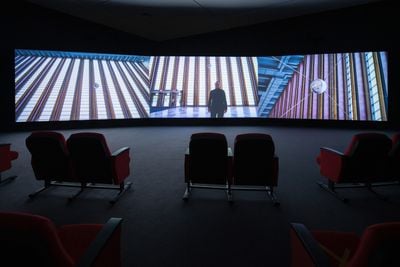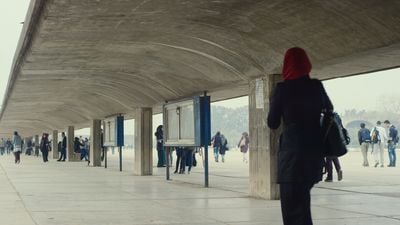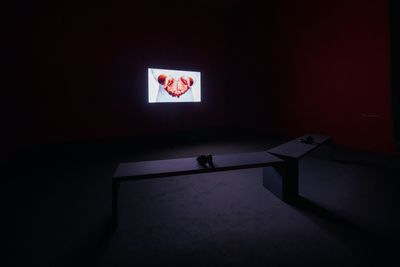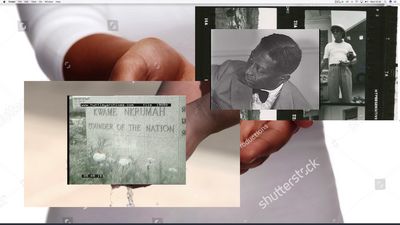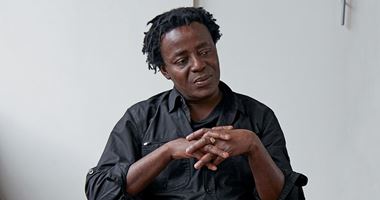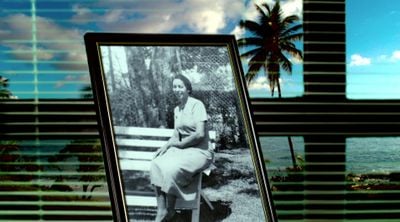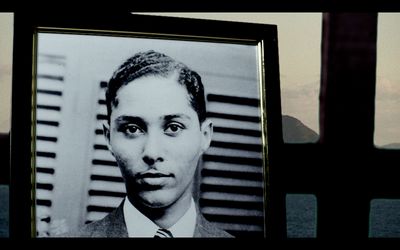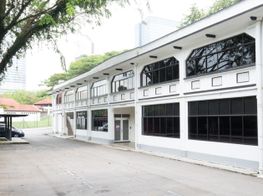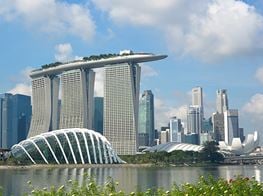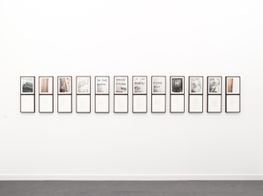Non-Aligned Histories Converse at NTU CCA Singapore
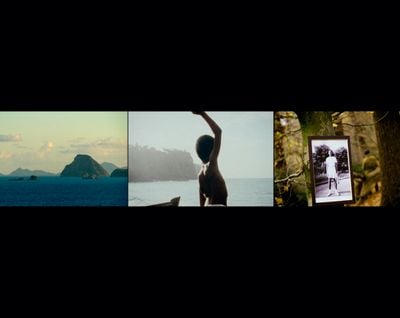
John Akomfrah, The Unfinished Conversation (2012) (still). © Smoking Dogs Films. Courtesy Smoking Dogs Films and Lisson Gallery.
Opening Naeem Mohaiemen's three-channel video installation Two Meetings and a Funeral (2017), one of three works composing Non-Aligned, a group show curated by Ute Meta Bauer at NTU Centre for Contemporary Art Singapore (4 April–27 September 2020), is footage of Singapore's first foreign minister Sinnathamby Rajaratnam. He is addressing the 1973 summit of non-aligned nations in Algiers.
The one-time mentee of George Orwell is pointing out the significance of a technical breakdown that occurred the day before, and what it means for the Non-Aligned Movement (NAM), a political project formally established in 1961 as a de-colonial exercise of anti-imperialist international solidarity. 'All the equipment that we are using to threaten the big powers, is provided by them', he says gravely, no doubt with the U.S. and the U.S.S.R. in mind, given the Cold War binaries that NAM sought a 'third way' through. 'They turn it off, we are lost'.
What follows is a tracing of that 1973 meeting, the 4th NAM summit, which called for an equitable New International Economic Order, whereby the revolutionary Third World struggle for self-determination was intertwined with economic independence.
Archive film features the period's key players: a young Gaddafi calling Libya the only country to protest France's nuclear testing; Cuba's Fidel Castro introducing Palestinian leader Yasser Arafat, who salutes the Provisional Revolutionary Government of the Republic of South Vietnam—their foreign minister, Madame Nguyen Thi Binh, was in attendance. In one scene, Zambia's founding president Kenneth Kaunda acknowledges Chilean leader Salvador Allende's absence, with General Augusto Pinochet's anti-socialist, pro-U.S. coup underway.
Also making an appearance is Sheikh Mujibur Rahman, the first president of Bangladesh, established in 1971 after a war with former West Pakistan. Later, Mohaiemen's camera lingers on leftist politician Zonayed Saki interviewing an elderly Amir-ul Islam, co-architect of Bangladesh's constitution. They focus on Bangladesh's pivot from NAM, apparently indicated by Rahman's attendance at the 2nd Islamic Summit Conference in 1974, where Pakistan officially recognised the country. Rahman was assassinated the next year in a military coup.
To rally against this historical fade seems to be the intention of Non-Aligned as a whole, with works connecting threads of the past in order to bring them into conversation with the present.
'[NAM] was born in Bandung'—where its precursor, the 1955 Asian-African Conference was held—'midwifed in Algeria, [and] died in Bangladesh', Amir-ul Islam states in the film credits. Of course, NAM did survive, but in a much-altered state, and the revolutionary ideas that circled the movement in the 1960s and 70s have since dissipated.
In this light, Two Meetings and a Funeral is at once a study, to borrow artist Dan S. Wang's words, of 'a two-fold loss' in the history of the global left—'first as political manifestation and second as memory'1—and 'a war', as historian Vijay Prashad says in the film, 'against forgetting'. To rally against this historical fade seems to be the intention of Non-Aligned as a whole, with works connecting threads of the past in order to bring them into conversation with the present.
And there is much to contend with. The Otolith Group's Nucleus of the Great Union (2017) is a dizzying constellation of images taken by African-American novelist Richard Wright on his first trip to Africa in 1953, where he followed pan-African socialist Kwame Nkrumah in a campaign for present-day Ghana's independence from Britain.
Wright braided personal reflections on his experience with observations of the political transformations he witnessed in his book Black Power: A Record of Reactions in a Land of Pathos (1954). He wanted his images to accompany his text, writes scholar Maren Stange, but his European publishers objected.2 Nucleus of the Great Union rectifies this fact as a visual essay that unfolds over a desktop screen, with windows that appear and overlap, including a YouTube clip titled 'Ghana New Nation 1957', and an email correspondence with the Beinecke Rare Book & Manuscript Library at Yale University, which houses the 1,500 images that Wright took during his 1953 trip.
Writer and academic Saidiya Hartman narrates over some of these visuals with quotes from her book, Lose Your Mother: A Journey Along the Atlantic Slave Route (2006), which charts her own experience of Ghana. The 'local boys, upon seeing her,' she says, 'wished their ancestors would have been enslaved so they could now be as rich as these Americans; for only the rich can indulge their quest for belonging by travelling across the Atlantic.'
The difficult question of belonging is the red thread in John Akomfrah's Unfinished Conversation (2012), a poetic scroll through the life of cultural theorist Stuart Hall, from a childhood in Jamaica marked by the colourism he experienced as a boy 'three shades darker' than the rest of his family, to the racism he organised against in the United Kingdom after arriving in 1951, around the time post-war migration into the country from the Caribbean was at its height. Images and footage from Hall's archive, including family photos and television appearances, intersect with those charting events in Britain and beyond at the time.
Hall emerged as a founding figure in British cultural studies. He was also a prominent member of the New Left, established in 1956, he explains in the film, in 'a space defined by' the Soviet Union's violent suppression of the Hungarian revolution, and the British and French invasion of the Suez Canal zone after the strategic waterway was nationalised by Egypt's second president Gamal Abdel Nasser, a leading figure in the pan-Arab movement who was instrumental in orchestrating the Bandung Conference. 'Somewhere in between [these two events]', Hall continues, 'the idea of a democratic, socialist, anti-imperial politics was born.'
Akomfrah's reading of Hall's life through a tapestry of the personal and political is an evocative articulation of a concept that the theorist introduced, which starts and ends Akomfrah's film, first as text and then as voiceover: that 'identity is an ever-unfinished conversation.'
Hall applied this position to politics, too. 'Culturally, we are in the ... phase of permanent revolution', he says in one clip; 'we are going to have to learn to live in a more relativistic universe.' Archival protest footage foreshadows the movements that have unfolded across the world in recent decades, whether the so-called Arab Spring or the Black Lives Matter protests.
Hall's words challenge those of Habib Bourguiba, Tunisia's first president, who describes in his address to the 1973 NAM meeting in Two Meetings and a Funeral, 'professors with grandiose theories' who do not offer what the people demand: 'fresh ideas'. Sometimes referred to as the godfather of multiculturalism, Hall was invested in radical fluidity, both embodied and envisioned. 'Another history is always possible', he says in Unfinished Conversation, 'another turning is waiting to happen.' The past is as open-ended as the future—a fact worth heeding as unresolved legacies rupture an unfolding present.
This was, of course, something that Sinnathamby Rajaratnam understood in that 1973 NAM meeting, flush with optimism for a different future. 'The old Cold War has ended, true, and we are grateful, because it gives us time to sort our problems', Rajaratnam tells his audience. 'It is an intermission between an old Cold War, and the new cold wars which are looming over the horizon'. —[O]
1 Dan S. Wang, 'Two Meetings and a Funeral', Afterimage: The Journal of Media Arts and Cultural Criticism, Vol. 46 No. 3 (September 2019): p. 89-94.
2 Maren Stange, 'Richard Wright's African Photographs', Geography of Photography: American Photography, Vol. 2. (2013).

